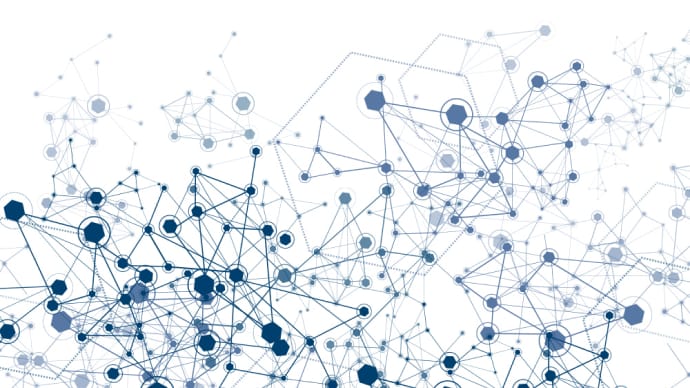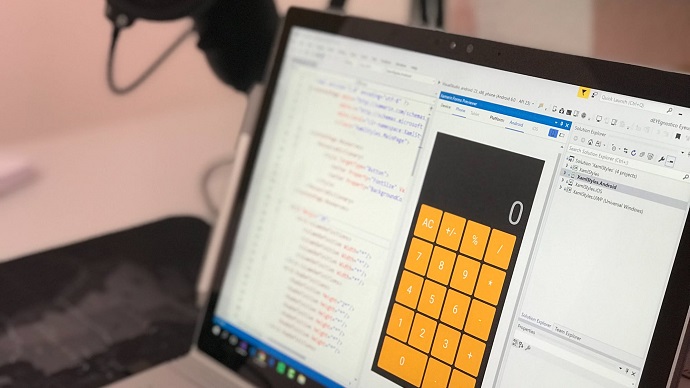Use VCE Exam Simulator to open VCE files

Get 100% Latest CCNP Enterprise Practice Tests Questions, Accurate & Verified Answers!
30 Days Free Updates, Instant Download!
350-401 Premium Bundle

Cisco CCNP Enterprise Certification Practice Test Questions, Cisco CCNP Enterprise Exam Dumps
ExamSnap provides Cisco CCNP Enterprise Certification Practice Test Questions and Answers, Video Training Course, Study Guide and 100% Latest Exam Dumps to help you Pass. The Cisco CCNP Enterprise Certification Exam Dumps & Practice Test Questions in the VCE format are verified by IT Trainers who have more than 15 year experience in their field. Additional materials include study guide and video training course designed by the ExamSnap experts. So if you want trusted Cisco CCNP Enterprise Exam Dumps & Practice Test Questions, then you have come to the right place Read More.
Understanding the CCNP Enterprise Certification and Its Significance
The CCNP Enterprise certification is a professional credential designed for networking professionals who aspire to demonstrate advanced expertise in managing and optimizing complex enterprise networks. It signifies a mastery of modern networking technologies, protocols, and architectural principles that underpin large-scale organizations. Attaining this credential requires candidates to pass two examinations, which collectively validate their ability to design, implement, and troubleshoot sophisticated network solutions in diverse enterprise environments.
What is the CCNP Enterprise Certification?
The first examination, often referred to as the core exam, covers the fundamental and advanced aspects of enterprise networking. Candidates are tested on dual-stack architecture, which enables them to configure and maintain both IPv4 and IPv6 protocols seamlessly. Virtualization is another key area, where understanding the creation and management of virtual network infrastructures is essential for modern businesses seeking agility and scalability. Infrastructure components, including routers, switches, and integrated services, form the backbone of enterprise networks, and candidates are expected to demonstrate the ability to manage, optimize, and secure these elements. Network assurance, which involves monitoring and validating network performance, is also a crucial aspect, ensuring that networks operate at peak efficiency and meet organizational standards. Security knowledge is indispensable, as enterprise networks are constantly exposed to cyber threats that require proactive measures, policy enforcement, and intrusion detection. Automation and programmability have emerged as transformative aspects of networking, enabling professionals to implement repetitive tasks efficiently and integrate emerging software-defined networking methodologies. Mastery of these areas ensures that a CCNP Enterprise-certified professional can address both current challenges and anticipate future network demands.
The second examination, known as the concentration exam, allows candidates to specialize in specific domains aligned with their career aspirations. Options include advanced infrastructure, wireless networks, network automation, or other specialized topics. By focusing on a particular area, professionals demonstrate not only their technical competence but also their strategic vision in applying advanced networking solutions to real-world scenarios. The combination of the core and concentration exams ensures that CCNP Enterprise holders possess both breadth and depth in their networking knowledge, making them indispensable in a variety of organizational contexts.
The value of the CCNP Enterprise certification extends beyond its status as a credential. It serves as a tangible demonstration of technical skill, critical thinking, and the ability to manage complex networks under varying conditions. In an industry characterized by rapid technological evolution, employers are increasingly seeking individuals who can not only maintain existing systems but also anticipate and implement innovations that improve network efficiency, resilience, and security. CCNP Enterprise certification signals to employers that a professional possesses these capabilities, providing assurance of competency and reliability.
One of the principal advantages of this certification is its global recognition. Organizations worldwide, ranging from multinational corporations to government institutions, recognize the rigor and comprehensiveness of Cisco certifications. Possessing a CCNP Enterprise credential communicates to prospective employers that an individual is capable of navigating the intricate challenges of enterprise networking, including large-scale deployment, multi-vendor integration, and cross-platform interoperability. This recognition is particularly valuable in an increasingly interconnected world where professionals often collaborate across borders, and network infrastructures must meet international standards.
In addition to global recognition, the certification cultivates a strong technical foundation. Professionals who pursue CCNP Enterprise develop a sophisticated understanding of network design principles, operational best practices, and troubleshooting techniques. This knowledge equips them to build and maintain resilient networks that can withstand evolving threats, scale to accommodate growing business demands, and provide reliable connectivity for mission-critical applications. Moreover, the certification emphasizes hands-on experience, requiring candidates to apply theoretical concepts to practical scenarios. This approach ensures that professionals are not merely versed in abstract concepts but are adept at solving real-world problems, which is critical in industries such as finance, healthcare, telecommunications, and technology.
Specialization is another compelling reason for pursuing CCNP Enterprise. In a saturated job market, demonstrating expertise in a particular domain differentiates a professional from peers. By choosing a concentration exam aligned with specific career objectives, candidates can signal their proficiency in areas such as wireless network design, automation, or advanced enterprise infrastructure. This specialization is particularly attractive to employers who seek targeted expertise to address niche challenges or implement cutting-edge technologies. It allows professionals to position themselves as authorities in their chosen field, enhancing employability and career progression opportunities.
The certification also fosters a mindset of continuous learning. Enterprise networking is a domain characterized by perpetual innovation, with emerging technologies such as software-defined networking, cloud integration, and advanced cybersecurity measures reshaping the landscape. CCNP Enterprise-certified professionals are encouraged to remain current with these developments, adapting their knowledge and skills to evolving technological paradigms. This adaptability is crucial for long-term career sustainability and establishes professionals as forward-thinking assets capable of guiding organizational strategy and innovation.
Achieving the CCNP Enterprise certification can significantly impact professional growth, opening doors to advanced roles and responsibilities. Network engineers, for example, benefit from increased credibility and the ability to undertake complex projects that require strategic planning, implementation, and troubleshooting. By mastering protocols, automation techniques, and network management tools, engineers can design scalable architectures that enhance operational efficiency and support organizational objectives. Employers often rely on certified professionals to spearhead network initiatives, mentor junior staff, and contribute to high-level decision-making, reflecting the trust and value associated with this credential.
Systems engineers also derive substantial advantages from CCNP Enterprise certification. These professionals are responsible for ensuring the smooth operation of IT infrastructures, often collaborating with network administrators and other IT specialists. Certification holders bring an elevated understanding of network interactions, virtualization, and cloud integration, which enhances the organization’s ability to maintain resilient and adaptable systems. This capability is particularly crucial in hybrid environments where traditional on-premises systems interface with cloud-based services. The combination of technical proficiency and strategic insight makes certified systems engineers indispensable in ensuring continuity, performance, and security across complex infrastructures.
Network administrators, while traditionally focused on day-to-day operations, can leverage CCNP Enterprise to assume more strategic responsibilities. Beyond monitoring servers, configuring devices, and managing routine maintenance, certified administrators are equipped to implement advanced network solutions, enforce security policies, and optimize system performance. This expanded capability allows them to lead initiatives, manage projects, and contribute to long-term network planning. As organizations increasingly value employees who can balance operational efficiency with strategic foresight, CCNP Enterprise certification becomes a powerful differentiator.
Moreover, CCNP Enterprise certification enables professionals to pursue roles such as network analysts or IT infrastructure managers. Network analysts rely on comprehensive monitoring and diagnostic skills to optimize performance and preempt operational bottlenecks. Certified individuals are capable of interpreting complex datasets, implementing corrective measures, and recommending improvements that enhance business outcomes. IT infrastructure managers, on the other hand, benefit from the strategic perspective gained through certification, allowing them to guide technology decisions, plan upgrades, and ensure alignment with organizational objectives. In both cases, CCNP Enterprise certification signals advanced knowledge, practical competence, and the capacity to lead projects with substantial impact.
The relevance of CCNP Enterprise certification extends across multiple industries. Telecommunications companies require professionals to manage intricate networks, ensuring uninterrupted communication and connectivity. In healthcare, certified individuals safeguard patient data, maintain medical application networks, and enhance operational efficiency. Startups benefit from CCNP-certified engineers who can implement innovative solutions that support growth and scalability, while government agencies depend on these professionals to secure critical infrastructure and enable seamless public services.
Certification also aligns with the growing emphasis on automation, cybersecurity, and cloud integration. Enterprises increasingly seek professionals capable of implementing automated workflows, monitoring network security, and managing cloud-connected systems. CCNP Enterprise certification equips candidates with the knowledge and experience to navigate these multifaceted responsibilities, ensuring they remain valuable contributors as technological landscapes evolve.
Earning a CCNP Enterprise certification unlocks a spectrum of career paths, starting with network engineering, a role that remains central to the operational stability of modern enterprises. Network engineers often begin their careers as support engineers, learning the intricacies of network devices, protocols, and troubleshooting techniques. Progressing into a full-fledged network engineer position involves designing, implementing, and optimizing networks across diverse environments, including enterprise offices, data centers, and hybrid cloud configurations. Professionals in this role routinely work with routers, switches, firewalls, and advanced routing protocols, ensuring seamless connectivity and resilience.
The demand for network engineers extends across multiple industries, including finance, healthcare, information technology, and telecommunications. Employers prioritize candidates who possess a robust understanding of both foundational concepts and advanced network architectures, capable of resolving operational challenges and scaling networks for future growth. The CCNP Enterprise credential equips engineers with both theoretical insight and practical competence, making them highly sought after. Companies such as Amazon, Microsoft, AT&T, Cisco, and Accenture often recruit certified professionals to lead network initiatives, design high-availability architectures, and implement security protocols that protect critical data.
Beyond day-to-day network management, certified network engineers are expected to troubleshoot complex connectivity issues, optimize performance using analytical tools, and contribute to long-term infrastructure planning. The skill set cultivated through the certification encompasses configuration of VLANs, OSPF, and advanced switching, combined with the capacity to anticipate potential network bottlenecks. This strategic expertise positions CCNP Enterprise professionals as indispensable assets in maintaining operational continuity and fostering innovation in enterprise networks.
Another prominent career trajectory for individuals holding CCNP Enterprise certification is systems engineering. Systems engineers focus on orchestrating IT infrastructures to ensure operational efficiency, continuity, and adaptability. Their responsibilities encompass server management, virtualization, cloud integration, and collaboration with network administrators to maintain cohesive enterprise operations. Mastery of hybrid networks, combining on-premises systems with cloud services, is particularly valuable, as organizations increasingly rely on hybrid architectures to achieve flexibility and scalability.
Systems engineers bring a unique perspective to enterprises, blending network knowledge with operational management skills. They ensure that infrastructure components interact seamlessly, that virtualization platforms operate efficiently, and that cloud resources are optimized to support organizational goals. CCNP Enterprise-certified professionals are particularly well-equipped for these tasks, possessing both practical experience and a theoretical foundation in enterprise networking, infrastructure optimization, and automation. This combination allows them to troubleshoot complex issues, implement scalable solutions, and support high-availability systems essential for critical business functions.
Organizations seeking systems engineers value the ability to plan for growth, integrate emerging technologies, and maintain robust security standards. Companies such as Google, IBM, Lockheed Martin, and government agencies actively recruit certified professionals to manage hybrid infrastructures, implement cloud solutions, and ensure seamless connectivity across diverse operational environments. Systems engineers also often participate in capacity planning, network auditing, and risk mitigation, leveraging their expertise to prevent disruptions and enhance system resilience.
Network administration is another vital role that benefits significantly from CCNP Enterprise certification. Administrators are responsible for managing the daily operations of enterprise networks, including monitoring servers, troubleshooting devices, and enforcing security policies. While the role often focuses on operational continuity, certified professionals are empowered to take on more strategic responsibilities, such as implementing advanced network solutions, optimizing performance, and guiding junior staff.
CCNP Enterprise-certified administrators possess advanced skills in managing network infrastructure tools, analyzing traffic patterns, and deploying updates across complex systems. Their competence extends to monitoring tools, diagnostic utilities, and configuration platforms, ensuring that networks operate at peak efficiency. Industries of all sizes require skilled administrators to maintain connectivity, safeguard data, and optimize resources, making the role highly stable and valuable. Organizations such as Dell, Verizon, HP, and mid-sized enterprises frequently seek certified administrators to manage enterprise networks and support operational excellence.
In addition to technical proficiency, network administrators with CCNP Enterprise certification often develop leadership skills, managing teams, coordinating cross-departmental projects, and influencing strategic IT decisions. By bridging the gap between operational execution and long-term planning, these professionals elevate the effectiveness of the IT department and enhance overall enterprise performance.
Network analysts play a pivotal role in optimizing enterprise operations by analyzing traffic, performance metrics, and operational data. These professionals are tasked with identifying bottlenecks, evaluating trends, and recommending improvements to maximize efficiency. CCNP Enterprise certification equips candidates with the ability to interpret complex datasets, employ diagnostic tools, and implement corrective measures that enhance network performance.
Analytical roles are particularly valued in large-scale enterprises and service providers, where seamless connectivity and high-speed performance are critical. Professionals in these roles use advanced monitoring platforms, packet analysis tools, and network visualization utilities to assess performance, predict potential issues, and implement optimizations. Employers such as Cisco, Comcast, and major ISPs recruit certified analysts to maintain operational continuity and support strategic initiatives that improve service delivery and business outcomes.
The analytical skill set developed through CCNP Enterprise certification also includes the capacity to collaborate with engineers and administrators, ensuring that recommendations are actionable and aligned with broader enterprise goals. Network analysts are instrumental in supporting digital transformation initiatives, enhancing user experience, and minimizing downtime through proactive performance management.
CCNP Enterprise-certified professionals often progress into IT infrastructure management, a role that combines technical expertise with strategic oversight. Infrastructure managers guide network strategy, plan upgrades, and oversee enterprise-wide IT operations. They are responsible for aligning technology initiatives with business objectives, ensuring that networks are both resilient and adaptable to evolving demands.
The certification prepares professionals to tackle these responsibilities by providing a deep understanding of network architecture, security principles, and automation techniques. IT infrastructure managers leverage this knowledge to make informed decisions about network design, resource allocation, and risk mitigation. They coordinate with executive teams, influence technology policies, and manage the deployment of emerging solutions to maintain enterprise competitiveness.
Companies including Fortune 500 organizations, financial institutions, and government agencies actively seek infrastructure managers with CCNP Enterprise certification. These professionals not only oversee technical operations but also mentor teams, develop training programs, and contribute to organizational strategy. The role demands both foresight and adaptability, as infrastructure managers must anticipate future technological trends while maintaining operational stability.
Beyond traditional roles, CCNP Enterprise opens pathways to specialized positions that address niche demands within modern IT ecosystems. Wireless network engineers, for instance, focus on designing, securing, and maintaining enterprise wireless networks. The proliferation of Internet of Things devices and the increasing reliance on wireless connectivity in business operations have amplified the demand for these professionals. Certified engineers apply expertise in tools such as spectrum analysis utilities, Wi-Fi 6 protocols, and wireless management platforms to ensure seamless connectivity across complex environments. Employers in healthcare, logistics, retail, and high-tech sectors often recruit wireless specialists to enhance mobility, scalability, and network reliability.
Network automation engineers represent another high-demand specialization. These professionals utilize coding, scripting, and software-defined networking methodologies to automate network deployment, reduce manual interventions, and increase operational efficiency. Proficiency in languages like Python, platforms such as Ansible, and network management frameworks like Cisco DNA Center is crucial. Cloud providers, enterprise IT departments, and SDN startups increasingly seek these experts to optimize resource usage, streamline operations, and implement scalable network infrastructures. CCNP Enterprise certification lays the foundation for mastery in these specialized domains, providing both credibility and technical competence.
Cybersecurity specialists also benefit from CCNP Enterprise certification, particularly when transitioning into network security roles. The growing frequency of cyber threats and data breaches has created an urgent need for professionals capable of managing firewalls, intrusion detection systems, and threat response frameworks. Certified individuals bring advanced skills in network monitoring, policy enforcement, and risk mitigation, making them indispensable in protecting sensitive organizational data. Global banks, technology companies, and government institutions consistently prioritize such professionals to safeguard critical infrastructure.
CCNP Enterprise-certified professionals find opportunities across a variety of industries. Telecommunications companies rely on these experts to maintain uninterrupted communication networks, optimize performance, and support service delivery. Healthcare organizations depend on certified professionals to protect patient data, manage medical application networks, and enhance operational efficiency. Startups value engineers who can implement innovative networking solutions, enabling scalability and operational growth, while government agencies require these specialists to secure and maintain critical infrastructure.
The versatility of CCNP Enterprise certification allows professionals to adapt to diverse environments, ranging from traditional enterprise offices to cloud-native organizations. The credential supports career progression by fostering expertise in design, implementation, automation, and security, ensuring that certified individuals remain competitive as the networking industry continues to evolve.
The CCNP Enterprise certification unlocks pathways to specialized roles that demand highly refined technical skills and strategic foresight. One of the most sought-after avenues is wireless network engineering. In contemporary enterprises, wireless networks have become the backbone of organizational connectivity, enabling seamless communication, supporting mobile devices, and integrating Internet of Things devices across operational environments. Wireless network engineers are tasked with designing, securing, and maintaining these complex networks, ensuring high availability and optimal performance even in high-density settings.
Professionals in this domain leverage a comprehensive understanding of Wi-Fi standards, including Wi-Fi 6 and evolving protocols, to enhance signal efficiency and coverage. They employ advanced tools for RF spectrum analysis, site surveys, and network performance monitoring to mitigate interference and optimize throughput. The role demands not only technical expertise but also the ability to anticipate future networking needs, integrating new technologies to accommodate growth and emerging business requirements. Organizations across healthcare, logistics, retail, and high-technology sectors seek wireless network engineers capable of maintaining uninterrupted connectivity and enabling robust enterprise operations. The certification equips professionals with both practical experience and theoretical knowledge, making them highly desirable for positions that require precision, innovation, and proactive problem-solving.
Wireless network engineers must also collaborate with other IT professionals, including network administrators and systems engineers, to ensure cohesive infrastructure management. Their work involves optimizing bandwidth allocation, implementing security protocols, and configuring access points to support both legacy and modern devices. As enterprises increasingly depend on wireless connectivity for productivity and efficiency, the strategic influence of these professionals continues to expand, highlighting the value of CCNP Enterprise credentials in facilitating expertise in wireless networking and advanced connectivity.
Another niche opportunity enabled by CCNP Enterprise certification is network automation engineering. As enterprise networks grow in complexity, manual configuration and maintenance become increasingly inefficient and prone to errors. Network automation engineers address these challenges by implementing automated workflows, leveraging software-defined networking technologies, and applying scripting knowledge to streamline network operations. Their primary goal is to enhance operational efficiency, reduce downtime, and enable rapid deployment of network resources.
Professionals in this field utilize programming languages such as Python and automation platforms like Ansible to create scripts that manage configuration changes, monitor performance, and trigger proactive responses to potential issues. Integration with network management frameworks such as Cisco DNA Center allows for centralized control and visibility, ensuring that automation strategies align with organizational objectives. CCNP Enterprise certification provides the foundational knowledge required to understand network architectures, protocols, and security considerations, equipping candidates with the confidence and competence to implement automation solutions at scale.
The growing adoption of cloud services, hybrid environments, and multi-vendor infrastructures amplifies the demand for network automation expertise. Enterprises and technology firms increasingly seek professionals who can reduce operational overhead, optimize resource allocation, and improve scalability through automated processes. The role of automation engineers is highly strategic, as it enables IT departments to focus on innovation and proactive problem-solving rather than routine maintenance. Certified professionals are therefore well-positioned to secure opportunities with cloud providers, enterprise IT divisions, and software-defined networking startups, where automation capabilities are critical to operational success.
Cybersecurity represents another niche domain where CCNP Enterprise certification offers substantial advantage. The proliferation of cyber threats, including malware, ransomware, and targeted attacks, necessitates professionals who can implement robust network security measures. Certified individuals are often tasked with managing firewalls, intrusion detection and prevention systems, and security information and event management tools to safeguard organizational assets. Their responsibilities include configuring access control policies, monitoring traffic for anomalies, and responding swiftly to potential breaches.
In addition to operational security tasks, cybersecurity specialists with CCNP Enterprise certification contribute to long-term network defense strategies. They evaluate emerging threats, design secure network architectures, and advise on best practices to minimize vulnerabilities. This expertise is critical in sectors handling sensitive data, such as banking, healthcare, and government agencies, where breaches can have far-reaching consequences. The certification equips professionals with a deep understanding of network protocols, encryption standards, and security frameworks, enabling them to design resilient systems and implement policies that meet both organizational and regulatory requirements.
Collaboration is also essential in cybersecurity roles, as specialists coordinate with network engineers, administrators, and compliance officers to ensure holistic protection. By integrating threat intelligence, monitoring tools, and automated responses, these professionals strengthen enterprise resilience against evolving cyber risks. The combination of technical acumen, analytical skills, and strategic foresight makes CCNP Enterprise-certified professionals highly attractive to organizations seeking to fortify their digital infrastructures.
CCNP Enterprise certification also prepares professionals for roles in advanced infrastructure and hybrid network management. Modern enterprises increasingly rely on hybrid environments that blend on-premises systems with cloud-based services, creating complex architectures that require precise orchestration. Professionals managing these infrastructures must ensure seamless communication between diverse components, optimize performance, and maintain security across multiple layers of the network.
In this capacity, certified professionals design and implement scalable network architectures, configure routing and switching protocols, and monitor system performance using sophisticated diagnostic tools. They address interoperability challenges between legacy systems and modern technologies, ensuring that enterprise networks remain resilient and adaptable. Expertise in virtualization, cloud integration, and software-defined networking allows these professionals to manage dynamic workloads efficiently, enabling organizations to respond quickly to business demands and technological advancements.
The hybrid network management role often intersects with strategic IT planning. Professionals may participate in technology roadmap development, evaluate new solutions for integration, and implement policies that support long-term operational goals. Employers, including large-scale corporations, technology firms, and government organizations, seek individuals capable of managing complex infrastructures, ensuring reliability, and driving innovation. CCNP Enterprise certification provides the essential foundation for navigating these challenges, blending technical mastery with strategic insight.
Specialized roles for CCNP Enterprise-certified professionals extend beyond technical implementation to include collaboration and strategic influence within organizations. Wireless network engineers, automation specialists, cybersecurity professionals, and infrastructure managers all engage with cross-functional teams to align network operations with business objectives. Their insights inform decision-making, influence project prioritization, and contribute to organizational resilience and growth.
Innovation is a critical aspect of these roles. Certified professionals are often tasked with integrating emerging technologies, such as Internet of Things devices, software-defined networking, cloud-native solutions, and advanced security frameworks. Their ability to anticipate industry trends, evaluate new tools, and implement best practices positions enterprises to remain competitive in rapidly evolving markets. CCNP Enterprise certification underpins this capability, providing a structured framework of knowledge and practical skills that support informed innovation and strategic execution.
Furthermore, professionals in specialized networking roles frequently act as mentors and knowledge resources within their organizations. By sharing expertise, guiding less experienced colleagues, and contributing to training initiatives, they reinforce organizational competency and cultivate a culture of continuous improvement. The combination of technical mastery, leadership influence, and strategic vision makes CCNP Enterprise-certified professionals indispensable assets in shaping the future of enterprise networks.
The demand for specialized CCNP Enterprise professionals continues to grow as organizations increasingly rely on advanced networking technologies. Wireless network engineers are essential for enterprises embracing mobility and IoT integration, while automation engineers are sought after for operational efficiency and scalability. Cybersecurity specialists remain indispensable in protecting critical data, and infrastructure managers ensure that hybrid environments function seamlessly and securely. These roles are in high demand across telecommunications, healthcare, finance, technology, and government sectors, reflecting the pervasive reliance on enterprise networks.
Compensation for specialized professionals reflects the technical complexity and strategic impact of their work. Wireless network engineers can command competitive salaries as their expertise supports organizational mobility and connectivity. Automation engineers are rewarded for their ability to streamline processes and enhance operational efficiency, while cybersecurity specialists often receive premium compensation due to the critical importance of safeguarding digital assets. Infrastructure managers benefit from a combination of technical and leadership responsibilities, which translates into attractive remuneration and long-term career growth opportunities.
Specialized roles cultivated through CCNP Enterprise certification offer substantial opportunities for career advancement. Professionals may evolve into senior engineering positions, lead technical teams, or transition into strategic IT leadership roles. Their expertise allows them to influence organizational technology strategies, participate in decision-making at executive levels, and contribute to innovation initiatives that shape the enterprise networking landscape. The combination of technical knowledge, practical experience, and strategic insight ensures that CCNP Enterprise-certified professionals remain valuable contributors throughout their careers.
Continuous learning is also integral to long-term success in these roles. Emerging technologies, evolving protocols, and new security threats require professionals to remain current and adaptable. CCNP Enterprise certification serves as a foundation for lifelong learning, encouraging individuals to expand their skills, explore new technologies, and maintain relevance in a rapidly changing industry. By combining foundational knowledge with specialized expertise, professionals can navigate complex challenges, optimize enterprise networks, and sustain career growth in highly competitive environments.
The telecommunications sector remains one of the most prominent industries that value professionals with CCNP Enterprise certification. As enterprises increasingly rely on interconnected systems and high-speed communication networks, the role of certified networking professionals becomes pivotal in maintaining operational continuity and supporting digital transformation initiatives. Network engineers in this domain are responsible for designing robust architectures, configuring routers and switches, and implementing protocols that ensure uninterrupted connectivity across vast geographic areas.
Telecommunications professionals frequently work with hybrid infrastructures that integrate on-premises systems with cloud services. This requires expertise in virtualization, dual-stack architecture, and network automation, all of which are reinforced through the CCNP Enterprise curriculum. Their responsibilities extend beyond simple maintenance; they must anticipate network congestion, prevent outages, and design scalable solutions that can adapt to fluctuating user demands. Organizations in this industry, including multinational service providers and regional carriers, seek certified professionals capable of balancing operational stability with innovative network design.
Moreover, telecommunications roles often involve collaboration with cybersecurity teams to ensure secure transmission of sensitive data, including financial information, personal communications, and business-critical transactions. Professionals must implement security measures, monitor network performance, and maintain compliance with international standards. The combination of technical mastery, strategic foresight, and problem-solving abilities cultivated through CCNP Enterprise certification makes these individuals indispensable in the telecommunications landscape.
Healthcare organizations also place a high premium on CCNP Enterprise-certified professionals. Modern healthcare systems rely on complex networks to manage electronic health records, telemedicine platforms, medical imaging, and other mission-critical applications. Network disruptions in this sector can have profound consequences, including compromised patient care and operational inefficiencies, making network reliability paramount.
Certified professionals in healthcare environments are tasked with designing resilient networks that ensure uninterrupted access to sensitive data and applications. Their work involves configuring secure networks, optimizing bandwidth allocation for high-demand applications, and implementing redundancy measures to mitigate potential failures. They also integrate cloud platforms and virtualization technologies to support scalable operations, enabling healthcare providers to deliver seamless services to patients and staff alike.
The healthcare sector increasingly emphasizes cybersecurity, as protecting patient information is both a legal requirement and a moral obligation. CCNP Enterprise-certified professionals contribute to safeguarding data by implementing firewalls, intrusion detection systems, and access control protocols. They also monitor network performance, troubleshoot issues, and guide infrastructure upgrades to maintain compliance with industry regulations. In this way, certification enhances both the technical capabilities and strategic value of professionals, allowing them to support critical healthcare operations effectively.
Startups represent a dynamic and rapidly evolving segment of the business ecosystem that benefits significantly from CCNP Enterprise expertise. In these organizations, networking professionals often play a multi-faceted role, designing, implementing, and managing networks that support growth and innovation. Startups frequently operate with limited resources, necessitating efficient, scalable, and secure network infrastructures.
Certified professionals in startup environments are tasked with integrating cutting-edge technologies, such as cloud computing, wireless connectivity, and automation frameworks, to optimize network performance. Their responsibilities may include configuring routers and switches, managing virtualized environments, and implementing security protocols to protect intellectual property and operational data. The ability to anticipate future growth, design adaptable networks, and troubleshoot complex issues positions CCNP Enterprise-certified individuals as vital contributors to startup success.
Startups also provide opportunities for networking professionals to experiment with emerging technologies, including software-defined networking, IoT devices, and advanced monitoring tools. This exposure allows certified individuals to develop specialized skills, broaden their technical expertise, and gain experience in innovative environments. The combination of practical application, strategic insight, and adaptability cultivated through certification ensures that these professionals can meet the unique demands of entrepreneurial ventures.
Government agencies are another domain where CCNP Enterprise certification holds significant value. These organizations rely on secure, resilient networks to deliver public services, maintain communication channels, and protect sensitive information. Network engineers and administrators working in government settings are responsible for designing robust infrastructures, ensuring high availability, and safeguarding networks against potential threats.
Certified professionals in this arena manage complex, multi-tiered networks that support both internal operations and public-facing services. Their work often involves integrating legacy systems with modern solutions, configuring security protocols, and implementing redundancy measures to ensure operational continuity. Expertise in hybrid environments, automation, and cloud integration is particularly valuable, as government agencies increasingly adopt digital services and remote working solutions.
In addition to technical responsibilities, certified professionals contribute to policy development, risk assessment, and strategic planning. Their insights help shape infrastructure investment decisions, guide network modernization projects, and ensure compliance with regulatory frameworks. The ability to balance technical execution with strategic foresight distinguishes CCNP Enterprise-certified individuals as critical assets in public sector organizations.
The financial sector also demands highly skilled network professionals, given the sensitive nature of financial transactions, personal data, and regulatory requirements. CCNP Enterprise-certified individuals are often employed to design and maintain secure, high-performance networks that support banking operations, investment services, and online financial platforms. Their work includes configuring firewalls, monitoring traffic, managing virtualized infrastructures, and ensuring compliance with industry regulations.
In financial institutions, network disruptions or security breaches can have catastrophic consequences, including financial loss, reputational damage, and legal repercussions. Certified professionals play a vital role in preventing such incidents by implementing robust network architectures, deploying advanced security measures, and proactively identifying vulnerabilities. Their expertise in network automation, hybrid environments, and protocol management enables rapid response to operational challenges and ensures that financial services remain uninterrupted.
Moreover, CCNP Enterprise certification equips professionals with the analytical skills to evaluate network performance, identify bottlenecks, and implement optimizations that enhance efficiency and reliability. By integrating advanced monitoring tools and predictive analytics, certified individuals contribute to both operational excellence and strategic planning, reinforcing their value within the financial sector.
Educational institutions, from universities to research centers, increasingly rely on sophisticated networks to facilitate learning, research, and administration. CCNP Enterprise-certified professionals are essential in managing these infrastructures, ensuring connectivity for digital classrooms, research labs, and administrative systems. Their responsibilities include configuring network hardware, monitoring performance, implementing security protocols, and integrating cloud-based solutions to support scalable operations.
In academic environments, network reliability and security are paramount, as networks support sensitive research data, online examinations, and collaborative platforms. Certified professionals also implement redundant systems to prevent downtime, optimize bandwidth usage, and facilitate remote access for students and staff. The combination of technical expertise, problem-solving acumen, and strategic insight provided by CCNP Enterprise certification ensures that educational institutions can maintain robust, high-performing networks that support learning and innovation.
CCNP Enterprise-certified professionals enjoy significant career growth opportunities across the industries discussed. Salaries vary depending on experience, specialization, and geographic location, but the credential consistently correlates with higher earning potential and access to senior roles. Professionals in telecommunications, healthcare, financial services, and government agencies can expect compensation that reflects their advanced skills and strategic value, often exceeding the average earnings for non-certified counterparts.
Career progression extends beyond financial rewards, encompassing leadership opportunities, project management responsibilities, and strategic influence. Certified individuals often transition from technical roles into positions that involve guiding network strategy, leading teams, and implementing enterprise-wide initiatives. Their expertise allows them to contribute to high-level decision-making, influence technology adoption, and drive innovation within their organizations.
Beyond immediate career and financial benefits, CCNP Enterprise certification provides long-term professional advantages. It encourages continuous learning, adaptability, and engagement with emerging technologies, ensuring that professionals remain relevant in rapidly evolving industries. The certification equips individuals with the ability to navigate complex network architectures, implement advanced solutions, and manage critical infrastructures, skills that are transferable across sectors and highly valued by employers.
The combination of technical mastery, analytical insight, and strategic vision cultivated through CCNP Enterprise certification enables professionals to establish themselves as leaders within the networking domain. Their ability to design resilient networks, optimize performance, and implement security measures ensures enduring relevance, regardless of industry shifts or technological advancements. This enduring value solidifies the certification as a foundational credential for long-term career growth and professional recognition.
Embarking on the journey to obtain CCNP Enterprise certification requires meticulous planning, disciplined study, and practical experience. Professionals seeking to excel in enterprise networking must cultivate a robust understanding of advanced network concepts, including routing and switching, dual-stack architecture, virtualization, network assurance, and automation. These competencies are essential not only for passing the 350-401 ENCOR examination but also for thriving in real-world enterprise environments.
A strategic approach begins with leveraging official learning resources provided by Cisco. These materials encompass detailed documentation, tutorials, and recommended study paths designed to cover both theoretical foundations and practical applications. In addition to formal resources, online training platforms offer structured courses that break down complex topics into digestible modules, facilitating comprehension and retention. Certified instructors often provide guidance, practice exams, and lab exercises that simulate enterprise networks, enabling professionals to apply knowledge in a controlled, hands-on environment.
Practical experience is paramount in reinforcing theoretical understanding. Engaging with network devices, configuring routers and switches, implementing VLANs, and experimenting with routing protocols equips learners with the dexterity necessary to troubleshoot issues in real-time. Simulated labs, virtual environments, and sandbox networks allow for experimentation without the risk of disrupting live systems. By integrating practice with study, candidates gain confidence, develop problem-solving skills, and internalize advanced networking concepts essential for career advancement.
A comprehensive knowledge framework is critical for CCNP Enterprise certification. Candidates must master core topics such as enterprise infrastructure design, security measures, automation techniques, and troubleshooting methodologies. Understanding how different network components interact within a complex enterprise environment is essential for diagnosing issues, optimizing performance, and implementing scalable solutions.
Security knowledge is particularly crucial, as modern networks face persistent threats from cyberattacks, malware, and unauthorized access attempts. Professionals must be adept at deploying firewalls, configuring access controls, and monitoring traffic to detect anomalies. Equally important is familiarity with automation frameworks and tools that streamline repetitive tasks, reduce human error, and enhance operational efficiency. By developing expertise in these areas, certified individuals demonstrate not only technical competence but also strategic foresight, preparing them for leadership and specialized roles within organizations.
Analytical thinking and problem-solving skills complement technical knowledge, enabling professionals to identify root causes of network issues, anticipate potential bottlenecks, and implement proactive solutions. Certification candidates are encouraged to explore a variety of scenarios, including hybrid networks, cloud integrations, and high-density environments, to develop a versatile and adaptive skill set. This holistic preparation fosters confidence and ensures readiness for both examination requirements and practical challenges encountered in enterprise networking roles.
Effective study techniques can significantly enhance the preparation process. Structured learning schedules, regular practice exams, and hands-on lab sessions help candidates internalize knowledge systematically. Breaking down complex concepts into smaller, manageable units allows for focused learning, ensuring mastery of each topic before progressing. Additionally, collaborative study groups or online communities provide opportunities for discussion, problem-solving, and sharing of resources, fostering a deeper understanding of nuanced networking principles.
Visualization techniques, such as diagramming network topologies, simulating data flow, and mapping protocol interactions, aid in retaining complex information. These methods allow learners to conceptualize how different network components interact, how data traverses through layers, and how potential faults propagate. Combining visual learning with practical application ensures a comprehensive grasp of enterprise networking, which is critical for both certification success and effective performance in professional roles.
Reviewing real-world case studies further enhances preparation by illustrating practical applications of theoretical concepts. Analyzing how organizations implement network solutions, address security challenges, and optimize performance provides insights that go beyond textbook knowledge. Candidates develop the ability to translate abstract principles into actionable strategies, equipping them for decision-making and problem-solving in enterprise environments.
Hands-on experience is indispensable for CCNP Enterprise preparation. Engaging directly with networking equipment, virtualization platforms, and simulation tools allows professionals to practice configuration, troubleshooting, and optimization in a controlled environment. Lab exercises reinforce understanding of routing protocols, VLAN management, access controls, and automation scripts, translating theoretical knowledge into practical proficiency.
Candidates can utilize virtual labs, home lab setups, and cloud-based simulation platforms to replicate enterprise network environments. These tools provide exposure to scenarios such as hybrid networks, high-traffic simulations, and multi-vendor integration, ensuring readiness for complex real-world situations. Practical exercises also help develop troubleshooting acumen, enabling professionals to quickly diagnose and resolve network anomalies, a skill highly valued by employers.
Regular practice with monitoring tools, packet analyzers, and performance optimization utilities complements hands-on configuration exercises. Certified professionals gain familiarity with network behavior, learn to interpret traffic patterns, and develop predictive maintenance strategies. This combination of practical skills and analytical insight positions candidates to excel in enterprise network roles, demonstrating both technical capability and strategic awareness.
CCNP Enterprise preparation increasingly emphasizes automation and advanced technologies. Modern enterprise networks rely on automated workflows, software-defined networking, and cloud integrations to enhance efficiency, scalability, and resilience. Professionals must be proficient in scripting, leveraging automation tools, and implementing protocols that streamline repetitive tasks and enable dynamic network management.
Automation reduces human error, accelerates deployment, and ensures consistent configurations across complex environments. Candidates must understand how to integrate automation tools with network monitoring systems, implement proactive alerting, and create workflows that respond to changing conditions. Knowledge of scripting languages, network orchestration platforms, and software-defined solutions is vital for demonstrating readiness to handle advanced enterprise networks.
Familiarity with emerging technologies such as cloud-native architectures, virtualization platforms, and hybrid network designs enhances career prospects. Certified professionals can manage multi-layered infrastructures, optimize resource allocation, and design resilient systems that meet organizational demands. By integrating automation and advanced technologies into their skill set, candidates position themselves for specialized roles, leadership opportunities, and innovative projects within enterprise networks.
Beyond technical skills, professional networking and continuous development are integral to career advancement. Engaging with industry forums, attending conferences, and participating in online communities allow candidates to exchange knowledge, stay updated on technological trends, and learn from the experiences of peers. Professional connections often lead to mentorship opportunities, collaborative projects, and exposure to emerging best practices, enhancing both expertise and career prospects.
Continuous learning ensures that certified professionals remain relevant in a rapidly evolving field. Networking technologies, protocols, and security frameworks change frequently, requiring adaptability and ongoing skill enhancement. By staying informed about advancements, exploring new tools, and expanding technical knowledge, professionals maintain a competitive edge, ensuring that CCNP Enterprise certification translates into long-term career growth and resilience in the workforce.
Achieving CCNP Enterprise certification opens pathways to diverse and rewarding career opportunities. Certified professionals can pursue roles such as network engineers, systems engineers, network administrators, wireless specialists, network automation engineers, and cybersecurity experts. These positions offer both technical and strategic responsibilities, allowing individuals to influence network architecture, optimize performance, and enhance security.
Career progression often includes leadership and management opportunities, enabling certified professionals to oversee teams, guide projects, and contribute to organizational strategy. The combination of technical mastery, practical experience, and strategic insight cultivated through CCNP Enterprise certification equips individuals to assume positions of influence, shape network operations, and drive innovation within their organizations.
Compensation reflects the value of these skills, with certified professionals often earning higher salaries than non-certified counterparts. The credential signals expertise, reliability, and the capacity to manage complex enterprise networks, making certified individuals highly attractive to employers across telecommunications, healthcare, finance, government, and technology sectors. In addition to financial rewards, career advancement opportunities encompass strategic roles, specialized projects, and participation in cutting-edge technological initiatives.
CCNP Enterprise certification offers enduring professional value, providing a foundation for lifelong learning, career resilience, and technical mastery. Certified professionals are equipped to manage sophisticated enterprise networks, implement security protocols, integrate automation, and optimize performance across diverse environments. These capabilities remain relevant despite technological shifts, ensuring that certified individuals maintain a competitive edge throughout their careers.
The certification also fosters strategic thinking, problem-solving skills, and adaptability, qualities that extend beyond technical execution. Professionals can anticipate network challenges, implement scalable solutions, and contribute to organizational growth and innovation. By cultivating both technical expertise and strategic acumen, CCNP Enterprise-certified individuals secure positions as indispensable assets within their organizations, capable of influencing decisions, guiding teams, and driving technological advancement.
Earning a CCNP Enterprise certification offers a transformative pathway for IT and networking professionals seeking to advance their careers and establish themselves as experts in enterprise networking. The certification validates advanced skills in designing, implementing, and managing complex networks, covering essential technologies such as routing, switching, dual-stack architecture, virtualization, automation, and security. Professionals equipped with this credential are prepared to handle diverse responsibilities across network engineering, systems management, administration, wireless connectivity, automation, and cybersecurity.
The opportunities unlocked by CCNP Enterprise certification span a wide range of industries, including telecommunications, healthcare, finance, startups, government agencies, and education. In each of these sectors, certified professionals contribute to operational continuity, optimize network performance, ensure security, and integrate emerging technologies. Their expertise in hybrid networks, cloud integrations, and software-defined solutions positions them to support both day-to-day operations and strategic initiatives, enhancing organizational efficiency and resilience.
Specialized roles enabled by this certification allow professionals to focus on high-demand areas such as wireless network engineering, network automation, cybersecurity, and advanced infrastructure management. These positions require not only technical proficiency but also analytical thinking, problem-solving abilities, and strategic foresight. CCNP Enterprise-certified individuals are capable of implementing innovative solutions, troubleshooting complex issues, and guiding organizational technology strategies, making them indispensable assets.
The preparation for CCNP Enterprise certification reinforces a holistic understanding of networking principles, combining theoretical knowledge with hands-on practice, lab simulations, and automation expertise. Engaging with real-world scenarios, utilizing advanced tools, and participating in professional communities cultivates adaptability, continuous learning, and a strong foundation for leadership and specialized roles.
Career growth for certified professionals is significant, encompassing competitive salaries, opportunities for advancement, and roles with strategic influence. They are positioned to lead projects, oversee teams, and drive innovation while maintaining operational excellence and security across enterprise networks. The long-term value of CCNP Enterprise certification lies in its ability to provide both technical mastery and strategic insight, ensuring relevance in an ever-evolving industry and sustaining professional growth over time.
Ultimately, CCNP Enterprise certification equips networking professionals with the skills, knowledge, and credentials needed to excel in a competitive, high-impact, and technologically advanced environment. It transforms careers, opens doors to diverse opportunities, and establishes certified individuals as trusted, highly capable, and forward-thinking contributors in the field of enterprise networking.
Study with ExamSnap to prepare for Cisco CCNP Enterprise Practice Test Questions and Answers, Study Guide, and a comprehensive Video Training Course. Powered by the popular VCE format, Cisco CCNP Enterprise Certification Exam Dumps compiled by the industry experts to make sure that you get verified answers. Our Product team ensures that our exams provide Cisco CCNP Enterprise Practice Test Questions & Exam Dumps that are up-to-date.

Cisco Training Courses





















SPECIAL OFFER: GET 10% OFF
This is ONE TIME OFFER

A confirmation link will be sent to this email address to verify your login. *We value your privacy. We will not rent or sell your email address.
Download Free Demo of VCE Exam Simulator
Experience Avanset VCE Exam Simulator for yourself.
Simply submit your e-mail address below to get started with our interactive software demo of your free trial.